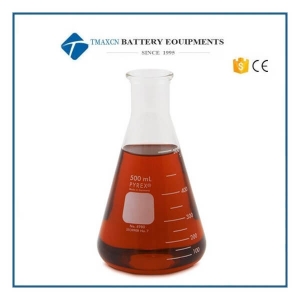products categories
- Battery Production Equipment Line
- Battery Lab Pilot Equipment Line
- Lithium Battery Pack Assembly Line
- Solid State Battery Assembly Line
- Sodium Ion Battery Production Line
- Supercapacitor Assembly Line
- Lithium Ion Battery Recycling Plant
- Dry Electrode Preparation Solution
- Perovskite Based Solar Cell Lab Line
- Li ion Battery Materials
- Cathode Active Materials
- Anode Active Materials
- Customized Battery Electrode
- Coin Cell Parts
- Lithium Chip
- Cylindrical Cell Parts
- Battery Current Collectors
- Battery Conductive Materials
- Electrolyte
- Metal Mesh
- Battery Binder
- Separator and Tape
- Aluminum Laminate Film
- Nickel Strip
- Battery Tabs
- Graphene Materials
- Nickel Felt
- Titanium Fiber Felt
- Battery
- Battery Pack Machine & Compoments
- Battery Pack Compoments
- Turnkey Solutions Battery Pack Assembly Line
- Cell Sorter
- Battery Pack Spot Welder
- Laser Welder
- Battery Charging Discharging Tester
- Battery Pack Aging Machine
- Battery Pack Comprehensive Tester
- CCD Visual Inspector
- Battery Pape Sticking Machine
- BMS Testing Machine
- Al Wire Bonding Machine
- Lithium Battery Machine
- Battery Tester & Analyzer
- Battery Safety Tester
- Material Characterization Tester
- Rolling Press Machine
- Spot Welding Machine
- Vacuum Mixer Machine
- Crimping/Disassembling Machine
- Vacuum Sealing Machine
- Electrolyte Filling
- Stacking/Winding Machine
- Electrode Cutter/Slitter
- Pouch Forming Machine
- NMP Solvent Treatment System
- Lithium Battery Production Plant
- Vacuum Glove Box
- Furnaces
- Coaters
- PVD Coater
- Laboratory Press Machine
- Large Press Machine
- Planetary Centrifugal Mixer
- Ball Mill
- Laboratory Machine
- Cutting Machine
- Metal Foam
contact us
- If you have questions, please contact us, all questions will be answered
- WhatsApp : +86 18659217588
- Email : David@tmaxcn.com
- Email : Davidtmaxcn@gmail.com
- Add : No. 39, Xinchang Road, Xinyang, Haicang Dist., Xiamen, Fujian, China (Mainland)
-
 500mL PYREX Erlenmeyer Flask for Chemical Research Use
500mL PYREX Erlenmeyer Flask for Chemical Research Use
500mL PYREX Erlenmeyer Flask for Chemical Research Use This 500 ml PYREX® narrow mouth Erlenmeyer flask with a heavy duty rim is made from low expansion, Type 1, Class A borosilicate glass that can be heated directly in an open flame. PYREX® Erlenmeyer flasks are made to ASTM E14040 specifications for general laboratory use such as mixing, heating, and cooling. The graduations are approximate and not intended for accurate liquid measurement. The Pyrex® brand is known for consistent high quality and their Erlenmeyer flasks are used in professional laboratories throughout the world. Product parameters Features: · Pyrex® Erlenmeyer flasks meet ASTM E1404 specifications and are made from low expansion, Type 1, Class A borosilicate glass that is capable of withstanding typical laboratory temperature variations. · Capacity: 500 ml · Uses a No. 8 rubber stopper · Diameter: 101 mm · Height: 176 mm · Marked to fill 100-500 ml in 50 ml increments · Markings are accurate to +/-5% · Extra-large marking spot Application Notes This flask is ideal for use with testing electrolyte solutions for the flow cell (please click to learn more):
 ru
ru
 +86 13174506016
+86 13174506016 David@tmaxcn.com
David@tmaxcn.com

